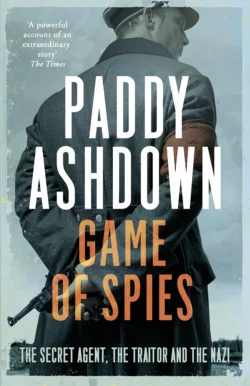Game of Spies: The Secret Agent, the Traitor and the Nazi, Bordeaux 1942-1944

Paddy Ashdown
Тип: электронная книга
Жанр: Книги о войне
Язык: на английском языке
Стоимость: 542.82 ₽
Статус: В продаже
Издательство: HarperCollins
Дата публикации: 16.04.2024
Отзывы: Пока нет Добавить отзыв
О книге: ‘Game of Spies’ tells the story of a lethal spy triangle between 1942 and 1944 in Bordeaux – and of France’s greatest betrayal by aristocratic and right-wing Resistance leader Andre Grand-clement.The story centres on three men: one British, one French and one German and the duel they fought out in an atmosphere of collaboration, betrayal and assassination, in which comrades sold fellow comrades, Allied agents and downed pilots to the Germans, as casually as they would a bottle of wine. It is a story of SOE, treachery, bed-hopping and executions in the city labelled ‘la plus collaboratrice’ in the whole of France.